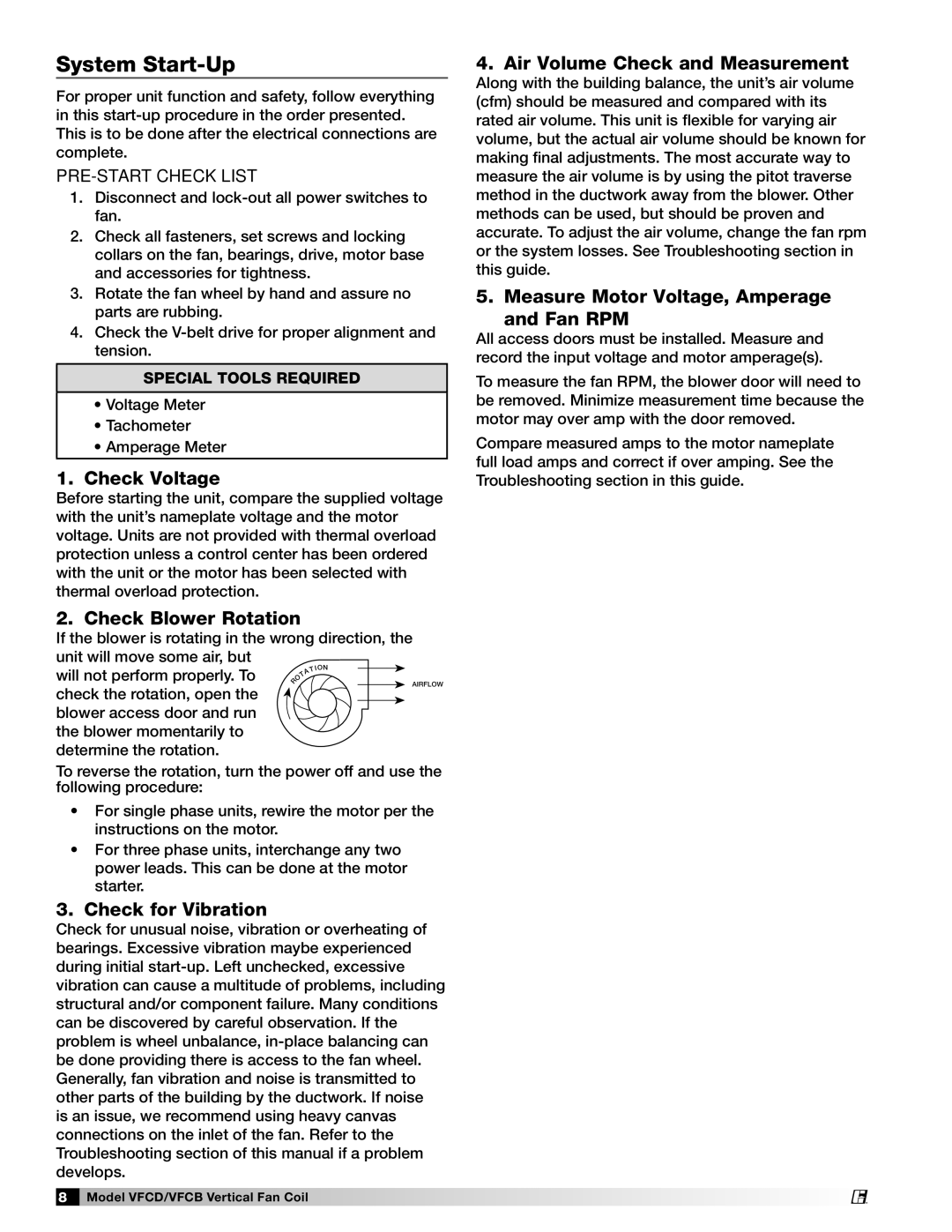
System Start-Up
For proper unit function and safety, follow everything in this
PRE-START CHECK LIST
1.Disconnect and
2.Check all fasteners, set screws and locking collars on the fan, bearings, drive, motor base and accessories for tightness.
3.Rotate the fan wheel by hand and assure no parts are rubbing.
4.Check the
special tools required
•Voltage Meter
•Tachometer
•Amperage Meter
1.Check Voltage
Before starting the unit, compare the supplied voltage with the unit’s nameplate voltage and the motor voltage. Units are not provided with thermal overload protection unless a control center has been ordered with the unit or the motor has been selected with thermal overload protection.
2. Check Blower Rotation
If the blower is rotating in the wrong direction, the unit will move some air, but
will not perform properly. To | TION |
|
|
|
| ||
A |
|
| |
T |
|
| |
O |
| AIRFLOW | |
check the rotation, open the | R |
| |
|
|
| |
blower access door and run |
|
|
|
the blower momentarily to |
|
|
|
determine the rotation. |
|
|
|
To reverse the rotation, turn the power off and use the following procedure:
•For single phase units, rewire the motor per the instructions on the motor.
•For three phase units, interchange any two power leads. This can be done at the motor starter.
3.Check for Vibration
Check for unusual noise, vibration or overheating of bearings. Excessive vibration maybe experienced during initial
4. Air Volume Check and Measurement
Along with the building balance, the unit’s air volume (cfm) should be measured and compared with its rated air volume. This unit is flexible for varying air volume, but the actual air volume should be known for making final adjustments. The most accurate way to measure the air volume is by using the pitot traverse method in the ductwork away from the blower. Other methods can be used, but should be proven and accurate. To adjust the air volume, change the fan rpm or the system losses. See Troubleshooting section in this guide.
5. Measure Motor Voltage, Amperage and Fan RPM
All access doors must be installed. Measure and record the input voltage and motor amperage(s).
To measure the fan RPM, the blower door will need to be removed. Minimize measurement time because the motor may over amp with the door removed.
Compare measured amps to the motor nameplate full load amps and correct if over amping. See the Troubleshooting section in this guide.
8 Model VFCD/VFCB Vertical Fan Coil
®
